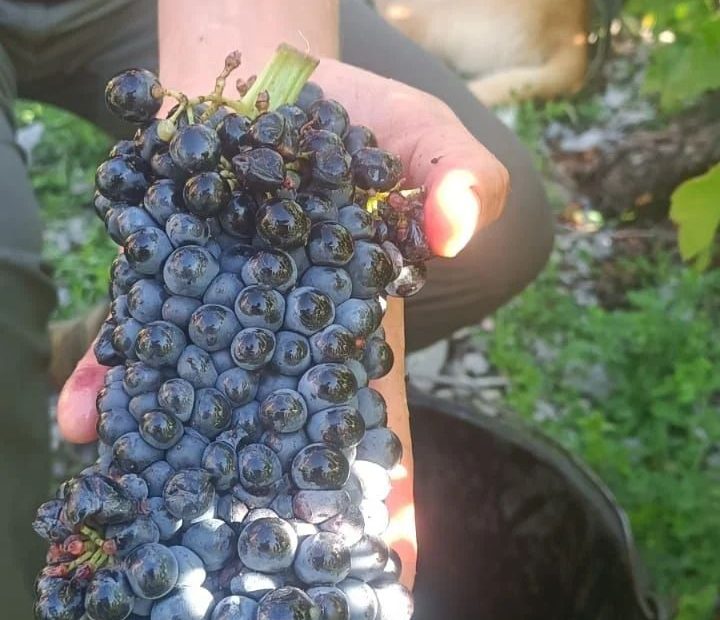Notre approche
Notre passage en agriculture biologique en 2006 est l’aboutissement d’une longue démarche. Au regard de la viticulture conventionnelle, c’est un changement total dans les façons de travailler, un nouveau rapport à la vigne, soumise aux aléas du temps et des saisons… mais qui correspond à nos valeurs et à ce que nous voulons laisser à nos enfants.
Puisant dans la vie de la terre et des vignes, ce mode de culture révèle le goût de notre terroir. Associé à des cépages autochtones (propres à la Savoie et uniques au monde !), il fait la typicité de nos vins. Quand nous les dégustons, nous leur attribuons un ‘coefficient bonheur’, car le vin est et doit rester un plaisir.

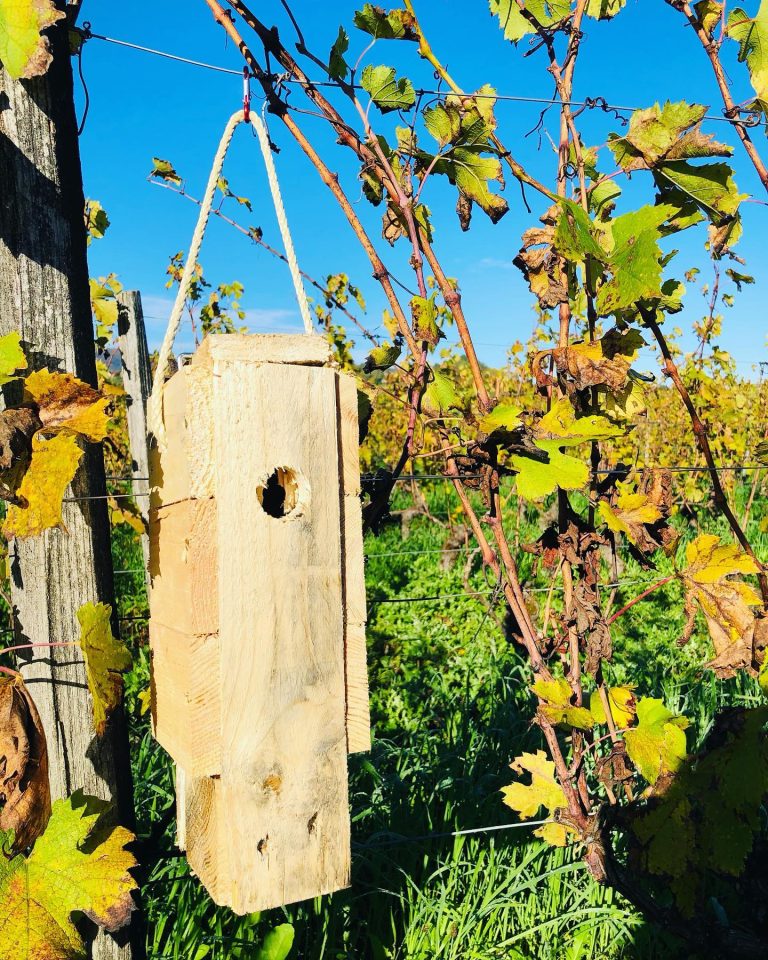

Un terroir, un vignoble
Travailler en agriculture biologique nous permet de mettre en valeur l’authenticité de notre terroir. Notre domaine se situe au pied d’une montagne, le Granier, dont la géologie et l’histoire sont à l’origine de la spécifité de nos vins bios.
Installé sur d’anciennes moraines glaciaires, cette montagne a vu un pan de 500 millions de m3 s’effondrer, dans la nuit du 24 au 25 novembre 1248, engloutissant 5 paroisses sur son passage. L’éboulement a engendré un relief chaotique constitué de formations variées à dominante argilo-calcaire où se trouvent mêlés des gros blocs peu altérés. Seule la vigne a pu coloniser ces terrains. (Source : Comité interprofessionnel des vins de Savoie)
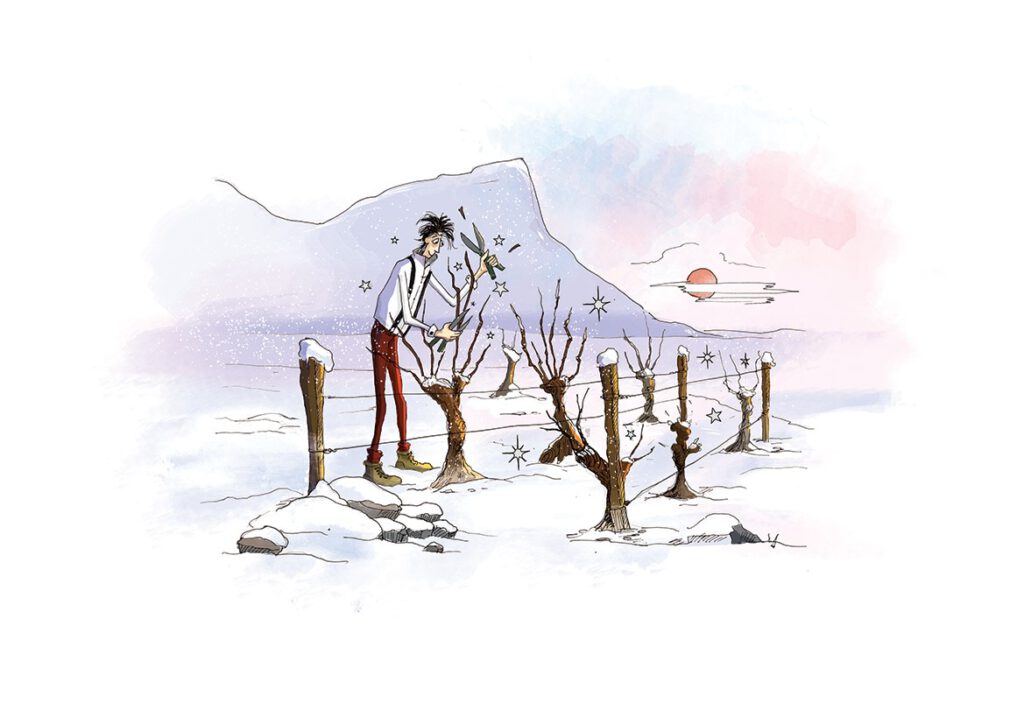
L’expression du terroir
Le sol est comme un organisme vivant : son aération, sa teneur en oligo-éléments, ses racines, sa faune et ses microbes maintiennent une activité biologique qui fait partie intégrante de l’expression du terroir.
C’est en respectant la nature de ce sol par des modes de culture biologiques qu’il se trouve le mieux valorisé. Notre démarche participe à la préservation de l’authenticité de notre terroir.
Faire du vin en Savoie
Avec une altitude moyenne de 1 500 m, 36 sommets de plus de 3 500m et 107 de plus de 3 000m, ce département s’identifie comme un département de haute montagne dans lequel les vignobles devraient se faire rares. Le terrain est accidenté, les parcelles morcelées, le climat rude.
Mais les glaciers du quaternaire ont modelé de grandes vallées et, en se retirant, abandonné d’importantes quantités de roches arrachées aux sommets et aux versants : les moraines. Au piémont du Granier, leur combinaison à un effondrement accidentel, une altitude et à une exposition propice crée un site privilégié et quasiment unique en France pour l’implantation de la vigne.
(Source : Comité interprofessionnel des vins de Savoie)
La démarche bio
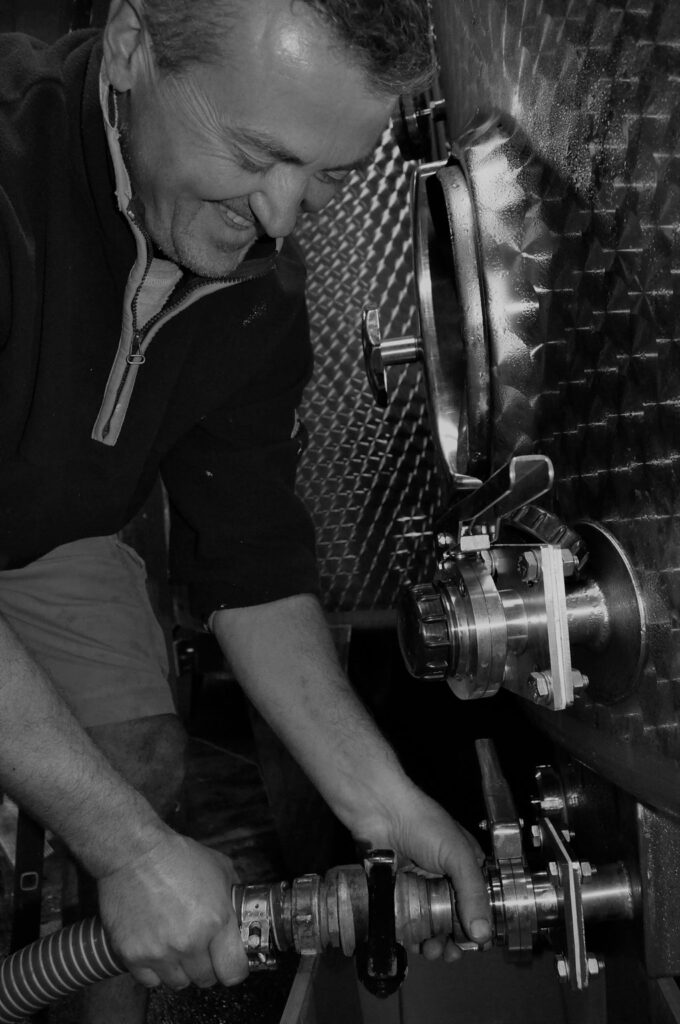
Simplicité et naturel
La production de nos raisins en agriculture biologique est régie par le règlement européen CE/834/2007, et obéit à un cahier des charges rigoureux. Le label AB nous est attribué par l’organisme de contrôle indépendant Ecocert. Pendant longtemps ce règlement européen ne s’est pas appliqué pas à la vinification, raison pour laquelle nous avons également choisi d’adhérer à Nature et Progrès : dans le respect de leur cahier des charges, nous prolongeons la démarche bio jusqu’au bout par la réduction, voire la suppression dans certains cas, de tout ajout de produit oenologique et de sulfites.
Nos vins bio sont issus d’un mode de production respectueux de l’homme et de l’environnement, qui se caractérise par l’utilisation de produits naturels : purin d’orties, décoctions et tisanes de plantes, molécules non toxiques (cuivre et souffre). Rien de plus qu’un retour éclairé et consenti à la culture de nos grands-parents avant l’ère du tout chimique… mais un pas énorme à franchir en matière de mode de travail !
« La bio » s’interdit donc le recours aux engrais chimiques, aux pesticides et autres produits chimiques de synthèse. Le travail de la terre en mode bio consiste à utiliser des engrais naturels organiques, à enherber les treilles pour lutter contre l’érosion des sols. Mais aussi à utiliser des subterfuges naturels pour lutter contre les prédateurs de la vigne (araignée rouge, mildiou, odium, blackrot,…)
Ce travail apporte un soin attentif au sol, privilégie son équilibre biologique et préserve la biodiversité.
Nous adhérons également à la fédération d’associations de consommateurs et producteurs bios Nature et Progrès, dont la charte implique non seulement des contraintes techniques d’agriculture biologique, mais un véritable projet de société. « Dans son souci d’une agriculture cohérente, Nature & Progrès attribue sa mention de façon globale à la fois à partir de cahiers des charges techniques, mais également en fonction d’une charte, prenant en compte les aspects environnementaux, sociaux et économiques. Cette charte a pour toile de fond un projet de société basé sur des relations de convivialité et de proximité entre les hommes et leur milieu : une société humaniste, écologique et alternative. »
(Source : natureetprogres.org)
Le travail de la vigne
Au fil des saisons
Un bon vin, c’est le travail de toute une année. C’est encore plus vrai pour nos vins biologiques, car nous n’utilisons pas d’adjuvants ni produits oenologiques lors de la vinification. La qualité des raisons et de la récolte font la qualité de nos produits bios. Voici un tour des saisons du travail des vignes en agriculture biologique…
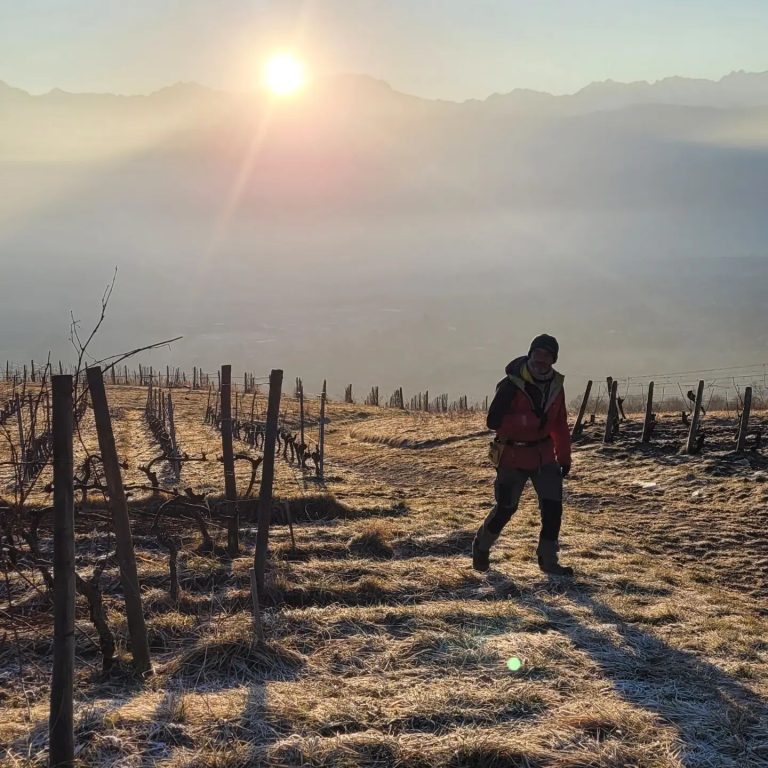
La fin de l’automne et l’hiver sont l’époque du nettoyage, de la taille et du détortillage de la vigne. Nous entretenons les abords du vignoble en refaisant les talus, en repoussant les bois. En fin d’hiver, il faut refaire les palissages, la « structure » de la vigne (piquets, fils, amarres). Puis c’est le moment où l’on « archette » : il faut plier les bois pour les attacher au fil.
Il s’agit également d’une période de travail à la cave : travail sur le vin, embouteillage, étiquetage, saison des foires…
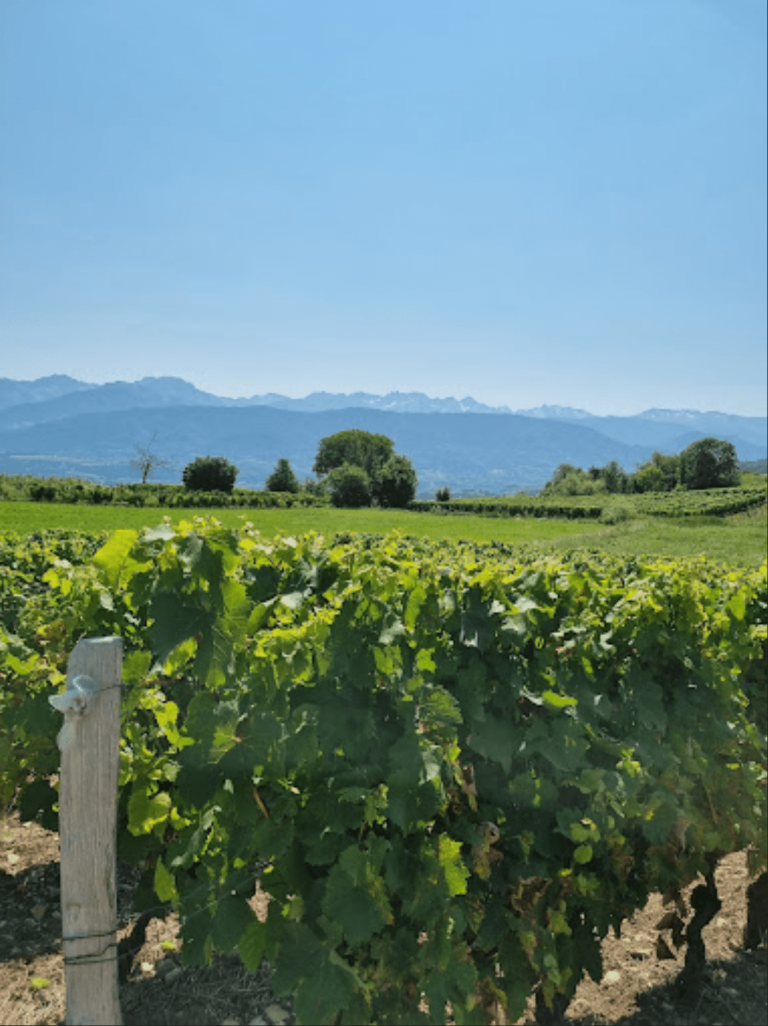
Au printemps, la sève remonte dans les bois. C’est le moment de la naissance des bourgeons qui vont donner les nouvelles branches, puis viennent les feuilles, et enfin les fleurs qui formeront les grappes de raisin. Les jeunes pousses restent menacées par le gel jusqu’au mois de mai. C’est aussi la période du travail des sols : labour, buttage, débuttage.
Avec la chaleur, les branches poussent très vite. Il faut canaliser la vigne avec des fils releveurs, la redresser, la couper, tout en entretenant l’enherbement. Il faut éclaircir les grappes pour obtenir moins de volume, mais plus de qualité.
La pluie amène des parasites, champignons, araignées… qui s’attaquent à la vigne. Il faut intervenir dans le respect de la nature. Mais si elle n’est pas assez abondante, les grains ne gonfleront pas. Enfin, les pluies violentes et les orages de grêles de la fin de l’été peuvent également être dévastateurs.
Les vendanges
La fin de l’été et le début de l’automne sont consacrés aux vendanges, l’aboutissement d’une année de travail. Une année de sueur et de prises de décisions en fonction du temps, des attaques de maladie, des nuisibles. Avec à la clé l’espoir d’une récolte de belles grappes juteuses et sucrées…
Des cépages précoces (Gamay, Roussette) aux tardifs (Jacquère, Mondeuse), les vendanges s’étalent sur un mois, afin d’atteindre la maturité maximum.
Nous vendangeons à la main, dans le but de préserver l’intégrité du raisin jusqu’à la pressée. Cela nous permet aussi de trier les grappes dans le but de ne conserver que les plus belles. La qualité du raisin compte pour l’essentiel dans la qualité du produit fini, le vin. Une vendange saine, non meurtrie, est essentielle à la qualité du vin. De cette façon, nous n’avons pas besoin d’adjuvants ni produits de vinification.
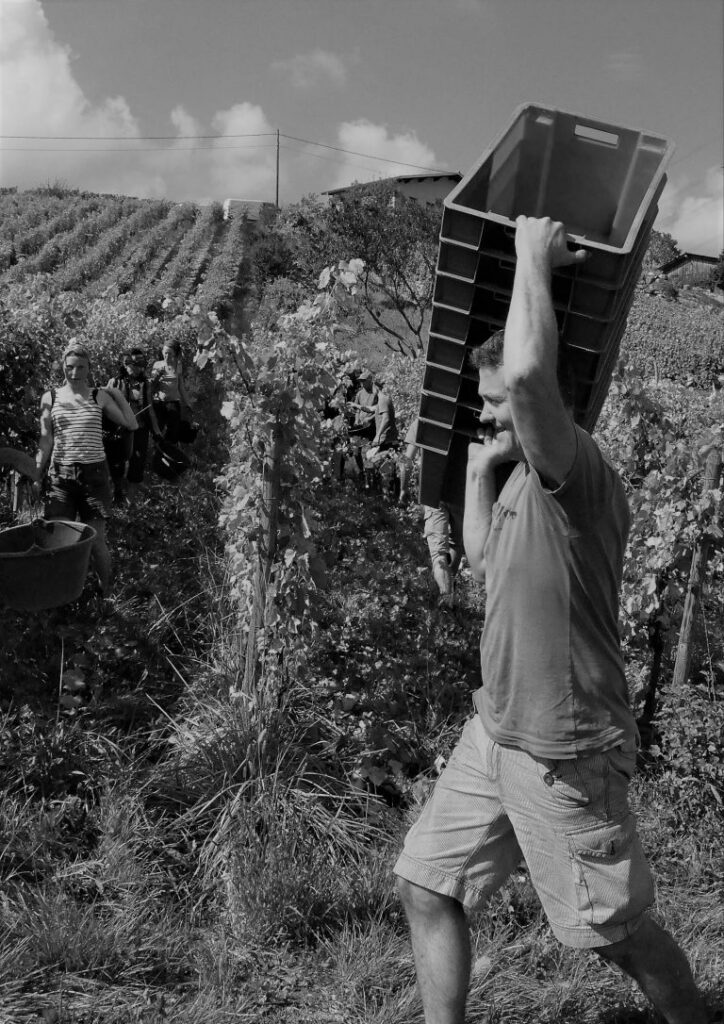
La vinification
Le label Nature et Progrès
Jusqu’à récemment la norme européenne ne garantissait que des vins provenant de « raisins issus de l’agriculture biologique ». La réglementation européenne vient tout juste d’évoluer pour limiter l’apport en produits oenologiques lors de la vinification (mise en application : août 2012)
Au Domaine Giachino, nous adhérons depuis plusieurs années au label Nature et Progrès, qui encadre très rigoureusement la culture de la vigne aussi bien que la vinification. Ainsi nous n’ajoutant aucun produit œnologique à nos vins, à l’exception, parfois, de sulfite sous forme gazeuse (le plus naturel)
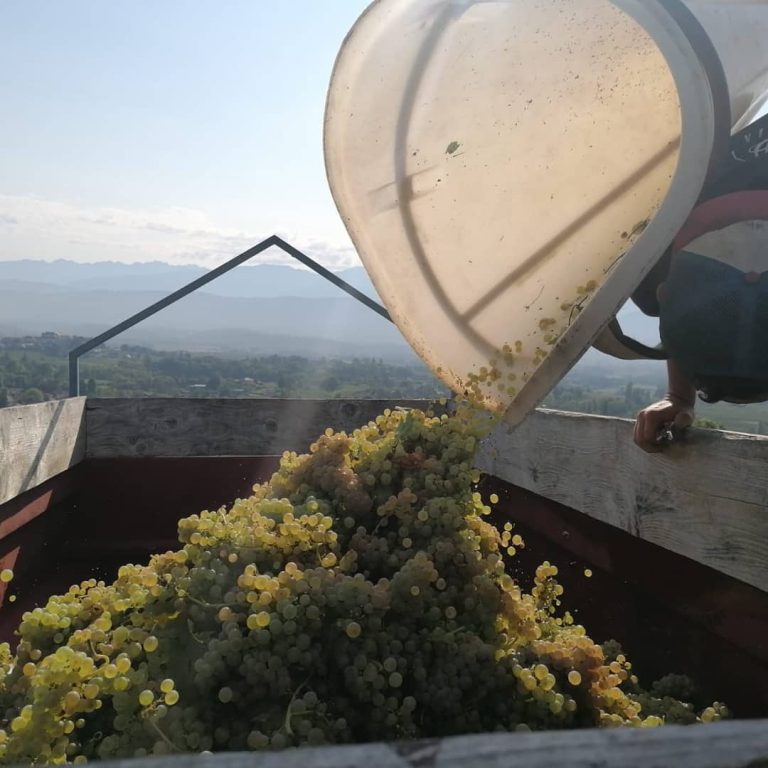
Le vin blanc
Les raisins blancs sont écrasés par pressurage pneumatique lent et doux. Les cuves sont thermorégulées à 5 degrés afin d’opérer un débourbage (clarification du moût) lent et naturel. Cette technique permet de diminuer radicalement, voire d’éliminer l’ajout de sulfites : le vin se conserve tout seul.
Huit à dix jours plus tard, nous procédons au soutirage du clair, qui va fermenter avec ses propres levures indigènes (naturellement présentes sur les grappes)
La température est maîtrisée à 15 degrés pour extraire le maximum d’arômes.
Sur nos rouges, nos Roussettes et certaines cuves de Jacquère s’ensuit la fermentation malolactique.
Une fois la fermentation terminée, nous procédons à un élevage sur lies totales, jusqu’à la mise en bouteilles.
Le vin rouge
Les vins rouges que nous produisons sont issus de raisins rouges à jus blanc.
Ces raisins sont vendangés manuellement en caisses, puis encuvés à la main en grappes entières.
La macération dure entre 10 et 20 jours, en fonction du cépage et du millésime. Durant cette période, nous procédons à des remontages quotidiens, sans trituration des grappes. À l’issue de cette macération, nous décuvons à nouveau en caisses avant le pressurage.
Le Gamay est élevé en cuve, la Mondeuse en barriques (demi-muids) sur lies totales, jusqu’à la mise en bouteille.
